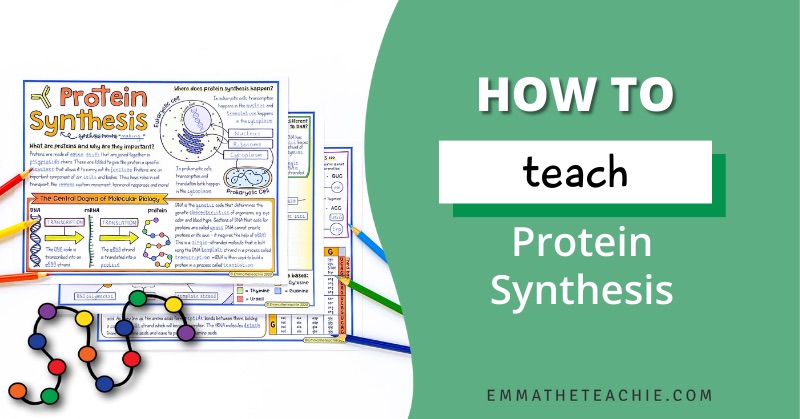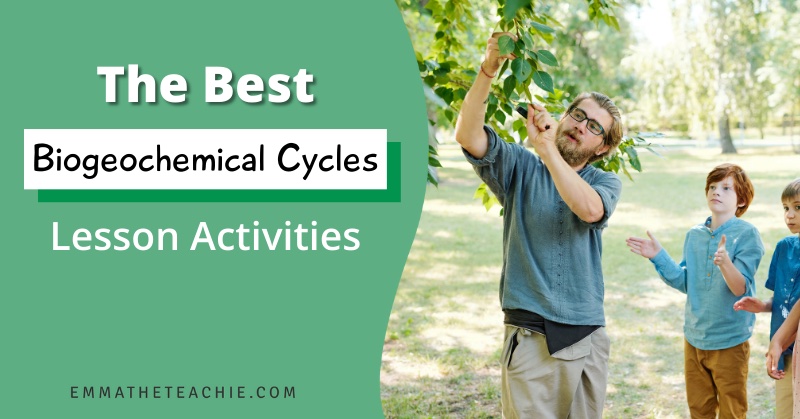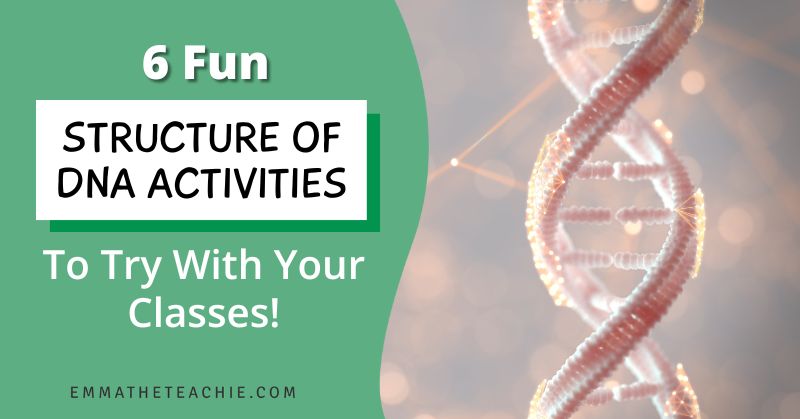
The Best DNA Replication Activity for High School Biology
Do I have a treat for you today!
We are talking all about DNA replication.
We all know that DNA replication is a tricky subject. In order for students to truly understand, they must see the topic multiple times in multiple formats.
While it is important to use a variety of teaching resources, I have one activity that has proved to be tried and true over the years.
I present to you: DNA Replication Doodle Notes.
I am a huge advocate for Doodle Notes. If you want to find out why, read 4 reasons why you’ll love using biology Doodle Notes.
This set of Doodle Notes is slightly different – it includes a cut and paste activity to help students chunk DNA replication into its different steps.
What I want to do today is take you on a tour of how I use these notes so you have all of the information to implement this in your class tomorrow.
1 – Complete these Doodle Notes as a class

My first piece of advice is to complete these DNA Replication Doodle Notes as a class.
Now, I usually let students complete Doodle Notes independently. But for this set of notes, I prefer to complete the notes as a whole class activity. It is a complicated process, and they will need more support in creating their notes.
There are multiple ways to get this done. Examples include:
- Use a visualizer. Place the Doodle Notes under the visualizer and complete with students. By doing this, everyone will be working at the same pace. Since everyone will be working at the same pace, it will be easier to address questions and misconceptions.
- Project the Doodle Notes on the whiteboard. This is along the lines of the visualizer, but this allows you to stand up in front of the class. If you project it on the whiteboard, use dry erase markers to fill in the information with students.
- Use the digital version. If you use the digital version, you can annotate the Doodle Notes using a digital markup tool, such as Kami. If you want more information on how to use Kami in your classroom, check out my post on how to use digital Doodle Notes.
- Use the Answer Key presentation. Normally this is for students to check their answers after completing Doodle Notes independently, but you can also use it to click through the answers one by one.
While I am recommending completing these Doodle Notes as a whole class, you obviously know your class best.
If you decide to let students to complete these at their own pace, just make sure they have had all of the in-class information in advance.

2 – Highlight the big picture of DNA replication

The first section of the DNA Replication Doodle Notes focuses on the big picture – why cells undergo replication. Before you move on, it is important for students to understand the why behind the process.
If students don’t have that fundamental information, then they won’t be able to correlate or relate the different parts of DNA replication.
In addition to explaining why, the first section also explains why the process is called “semi-conservative.”
Students can visualize this by coloring in parent DNA and new DNA. This helps them see that each new DNA molecule has one strand of the original parent DNA and one newly synthesized strand.
3 – Enzyme analogies

Now we get onto the fun part!
I have included a section where students can make analogies for all of the different enzymes.
Let’s face it… There are a TON of enzymes to remember.
By focusing on each enzyme one at a time, it is less overwhelming for students. By the time they get onto the big diagram of DNA replication, they are already comfortable and familiar with the enzymes involved.
Using analogies works really well in the process of DNA replication.
After students have written out their enzyme analogies, they can actually add their own doodles to emphasize the role of each enzyme in DNA replication.
This is a fun task for students, and helps with memorizing the role of each enzyme.

Once we have discussed the enzymes and students have created their enzyme analogies and doodles, I will usually let them take a “coloring break” so students can color in their enzymes with different colors.
We will use the same colors for the enzymes on the second page of the Doodle Notes.
4 – DNA replication steps

Ok… our students are familiar with the necessary enzymes. Now what?
It’s time for the actual process of DNA replication!
The second page of the Doodle Notes shows every step of DNA replication.
Keep in mind – As a whole, this can definitely look overwhelming to students. When topics look overwhelming, students tend to shut down.
My advice is to zoom in when you’re presenting so just one step at a time is showing. All of the students will benefit from this chunking of the information. It will definitely make the task seem more manageable, resulting in increased confidence.
Another brilliant way to help reduce overwhelm and just focus on one step at a time is to use the “cut and paste” version of these Doodle Notes.
Students will cut out flaps for each step, and paste them onto the diagram, before adding their notes.
Not only are students starting to learn the steps by putting them in order, but the interactive nature is keeping them engaged in their learning.
5 – Get the colored pencils out

Unless you have used the color versions (which I’m guessing due to school budgets you probably haven’t!), then now is the time to let students finish coloring in their DNA Replication Doodle Notes.
This is their favorite part! If you have any sleepers, they’ll surely be awake now.
This proves to be a nice brain break for students during the notes session.
Make sure to reiterate that students should color in each enzyme with the same color they used on page 1. Again, by doing so, students are creating mental connections that can be recalled later on.
If you used the cut and paste version, don’t fret! Your students can still color!
They can color code the flaps with the same color to match the enzyme acting at that step!
6 – Get students to test each other

We’re almost at the end of our journey.
At this point, the DNA Replication Doodle Notes are finished.
Yay!
It is now time to use the Doodle Notes to help your students learn.
One of the ways I love doing this is by using the finished Doodle Notes to test each other in pairs.
This is very simple to do and also allows you to walk around and formatively check student understanding.
When students are testing each other, one person will have their completed notes and question the other students for two to three minutes.
At the end of the time period, the roles switch and the person who was asking questions is now answering the other student’s questions.
Examples of high quality DNA replication questions include:
- Which enzyme is involved in unzipping the DNA strand?
- What happens after the DNA is unzipped?
Not only does this strategy promote student collaboration, but it helps students see how their finished notes can be used as an effective study aid.
This is my favorite DNA Replication activity

I created these Doodle Notes with the intent of making DNA replication easier for every student to learn.
It’s been so lovely to share these with other teachers, and hear how they’ve used these notes in their classrooms!
You can check them out for yourself on TeachersPayTeachers:
Or head over to my website shop right here:
There are so many ways to use Doodle Notes in the classroom and I have only skimmed the surface in this post. If you are interested in a more in depth explanation of how to use Doodle Notes, you’ll enjoy this blog post.
I hope you enjoy using these Doodle Notes in your own classroom!
Have a wonderful day,




